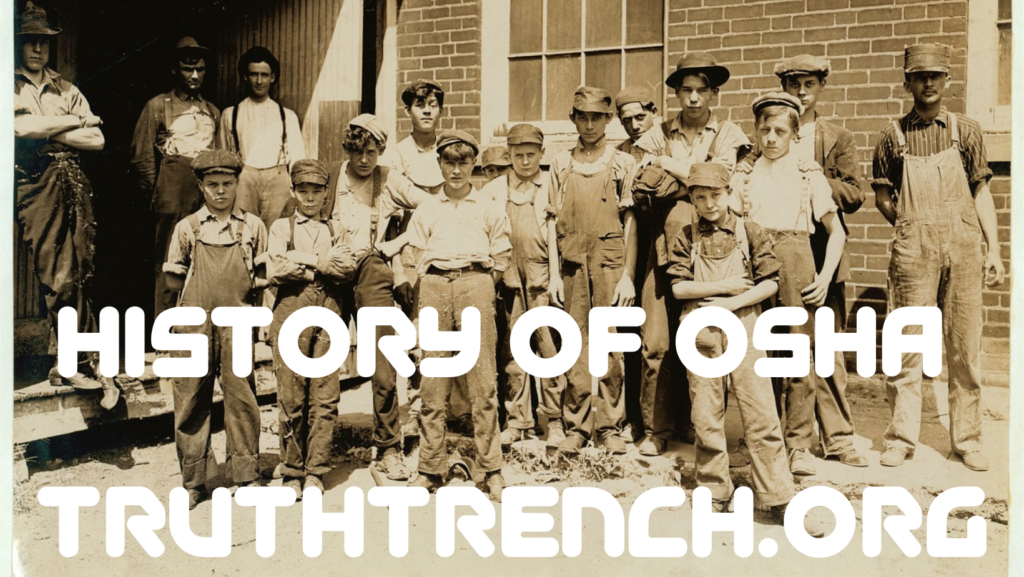In a world where workplace safety is paramount, the Occupational Safety and Health Administration (OSHA) stands as a stalwart guardian, ensuring the welfare of American workers. For those who seek to delve into the annals of bureaucratic history, OSHA is a fascinating institution. Its inception and evolution have played a pivotal role in safeguarding the rights and lives of workers across the United States. Others would say it is a nightmare of an organization to deal with. Join us on a journey through time as we explore the history of OSHA and its significant contributions to occupational safety.
The story of OSHA begins in the early 1970s, a time when industrialization was at its peak, but worker safety regulations were often lax or nonexistent. Workplace accidents and health hazards were alarmingly prevalent, prompting a need for a federal agency dedicated to occupational safety. Why the federal government needed to get involved is beyond the scope of this piece.
In 1970, President Richard Nixon signed the Occupational Safety and Health Act into law, birthing OSHA as a result. This groundbreaking legislation marked a turning point in worker rights and safety. OSHA was tasked with enforcing regulations, conducting inspections, and educating employers and employees about safe working conditions. Was this overreach of the federal government, beyond the prevue of state officials? Some would say so.
In its infancy, OSHA faced numerous challenges. Skepticism among businesses, concerns about regulatory overreach, and debates about the agency’s funding and scope were common. However, OSHA remained steadfast in its mission to ensure workers could return home safely at the end of each workday.
Over the decades, OSHA has achieved several milestones:
⦁ Safety Standards: OSHA has established numerous safety and health standards across various industries, from construction to manufacturing, ensuring workplaces are free from hazards such as toxic chemicals, falls, and machinery accidents.
⦁ Training and Education: The agency has played a crucial role in educating both employers and employees about best practices for workplace safety. This includes offering training programs and resources to empower workers with the knowledge to protect themselves.
⦁ Whistleblower Protection: OSHA introduced measures to protect whistleblowers who report safety violations. This empowers workers to speak out without fear of retaliation.
⦁ Reducing Workplace Fatalities: OSHA’s efforts have significantly reduced workplace fatalities and injuries since its inception. A strong focus on accident prevention and safety culture has contributed to these positive trends.
OSHA has not been without its share of controversies and criticisms. Some argue that the agency’s regulations can be burdensome for businesses, while others have questioned the adequacy of its resources to inspect and enforce compliance across all workplaces. Finding the right balance between protecting workers and not stifling economic growth remains an ongoing challenge.
As we reflect on the history of OSHA, it is evident that this bureaucratic entity has played a pivotal role in advancing occupational safety and health in the United States. Its evolution from a contentious inception to a “vital protector” of workers’ rights showcases the importance of regulatory bodies in ensuring the welfare of citizens; but has it caused more harm than good? Contact Truth Trench with your thoughts on the subject. If it means the standards of publication we just might share your work with the world.
For those who seek to learn more about this bureaucratic institution, understanding OSHA’s history sheds light on the ongoing efforts to strike a balance between economic growth and the fundamental right of every worker to return home safely from their job.
We aggregate the outbound content that OSHA routinely updates – Click here

